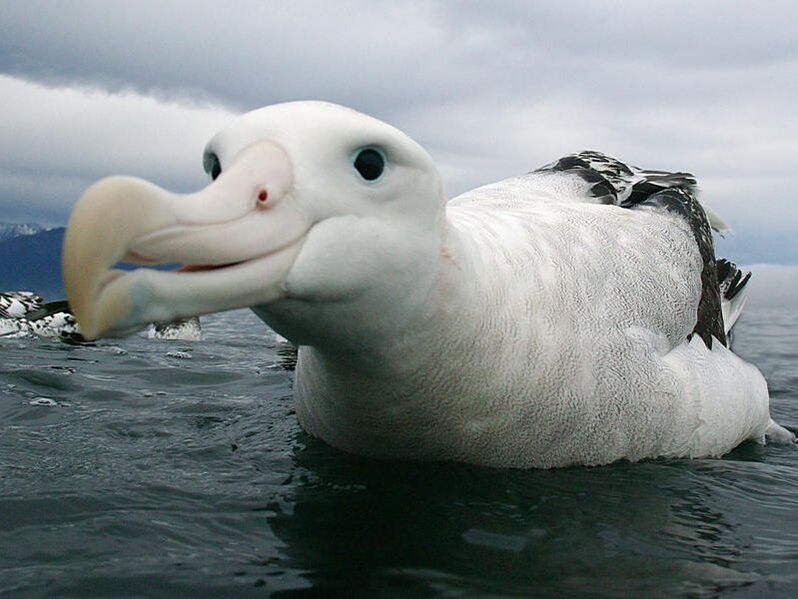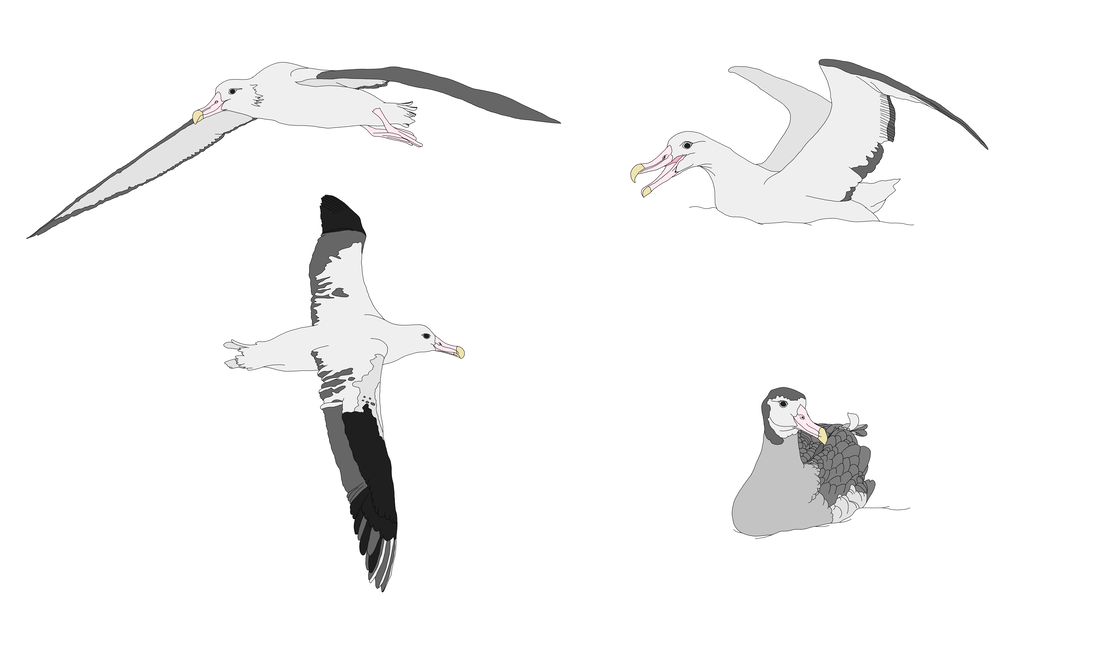A bird a day
As I discussed in my introduction post for “
a bird a day“, I am leaning heavily on online resources to draw these very rare and endangered birds.
We have some fantastic websites available to help us understand more about our wildlife here in Aotearoa – please take the time to read about these birds in more detail at the links provided!
Antipodean wandering albatross/toroa
The Antipodean albatross is a large albatross that varies in colour from black-and-white to chocolate brown depending on sex, age and race. They breed almost exclusively on the Auckland and Antipodes Islands and forage over the continental shelf edge and deep water from south of West Australia to the coast of Chile, but are most common in the Tasman Sea and over the Chatham Rise east of New Zealand. Since 2003 a few pairs have started breeding on the Chatham Islands.
Antipodean albatrosses are closely related to the wandering, Tristan and Amsterdam albatrosses, and more distantly related to the northern and southern royal albatrosses.
Source:
NZ birds online
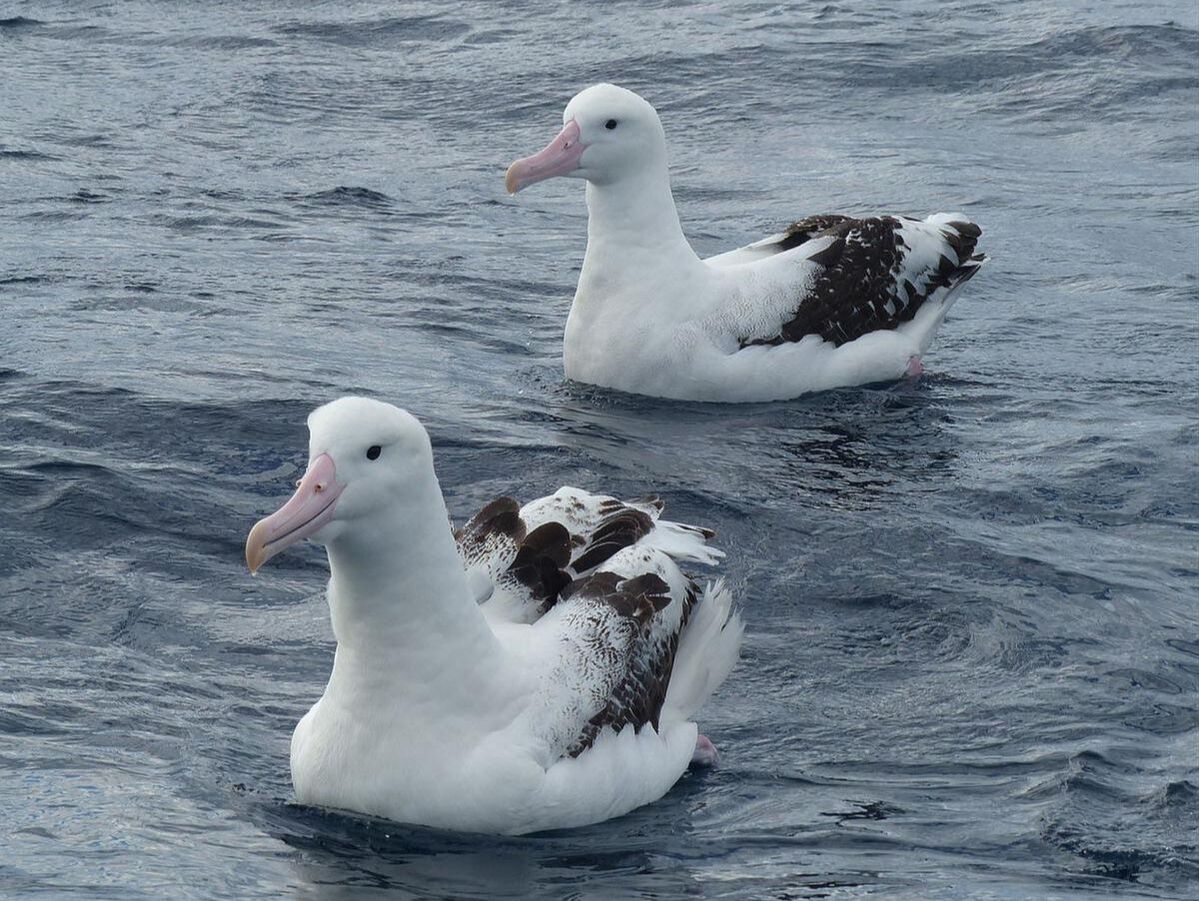
Antipodean albatross. Adult (behind) with southern royal albatross (front). Off Kaikoura Peninsula, June 2015. Image © Alan Tennyson by Alan Tennyson
|
|
The process
My first step was to try to understand seabird anatomy, so I did that in two phases.
First, to understand the flow of the toroa’s body, I picked some photos in a variety of poses and straight-up traced them, to help me identify the areas where I had questions.
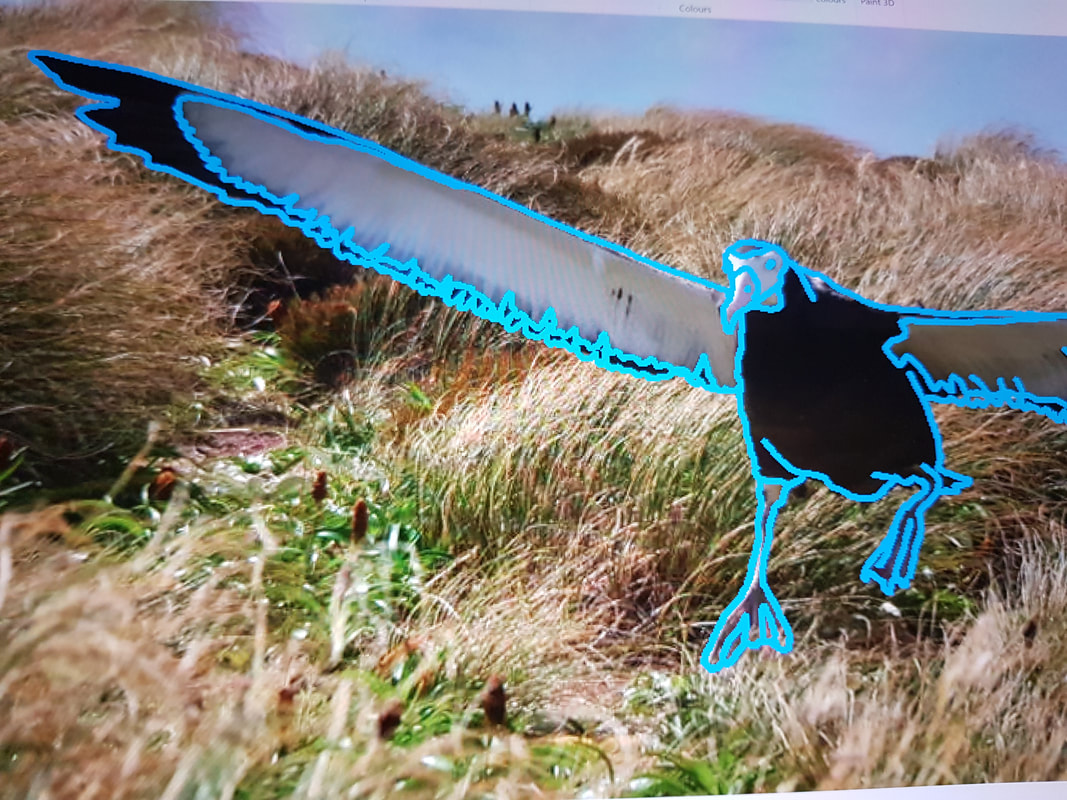
How do the legs attach to the body?
|
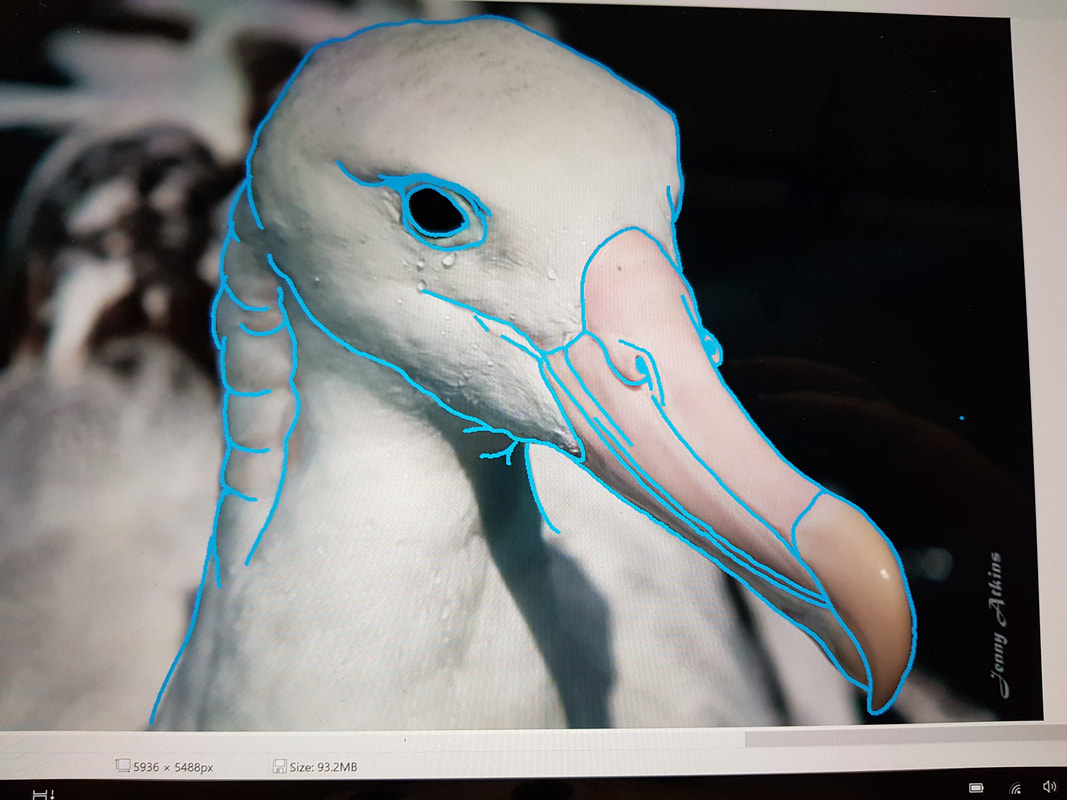
Those nostrils are bizarre!
|
Second, I looked at some albatross skeletons, and eventually got a good enough idea of wing and leg articulations, and the details of the head and beak structure, that I felt confident enough to proceed.
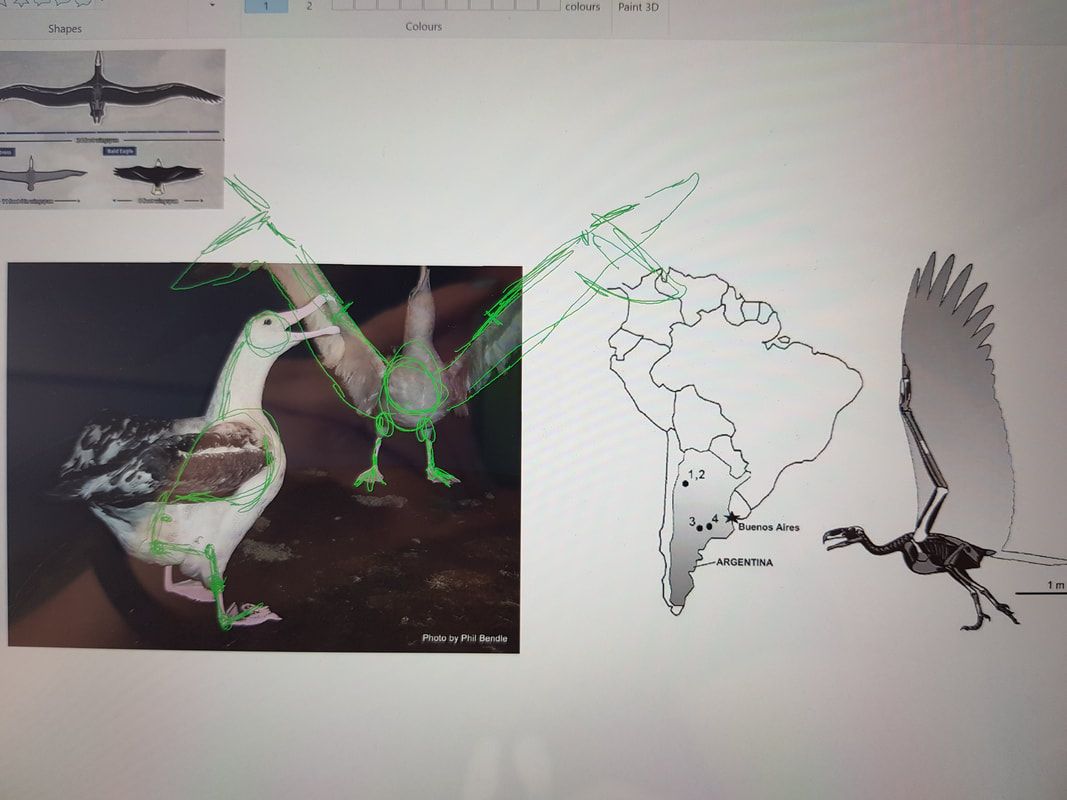
How do the wings and feet articulate?
|
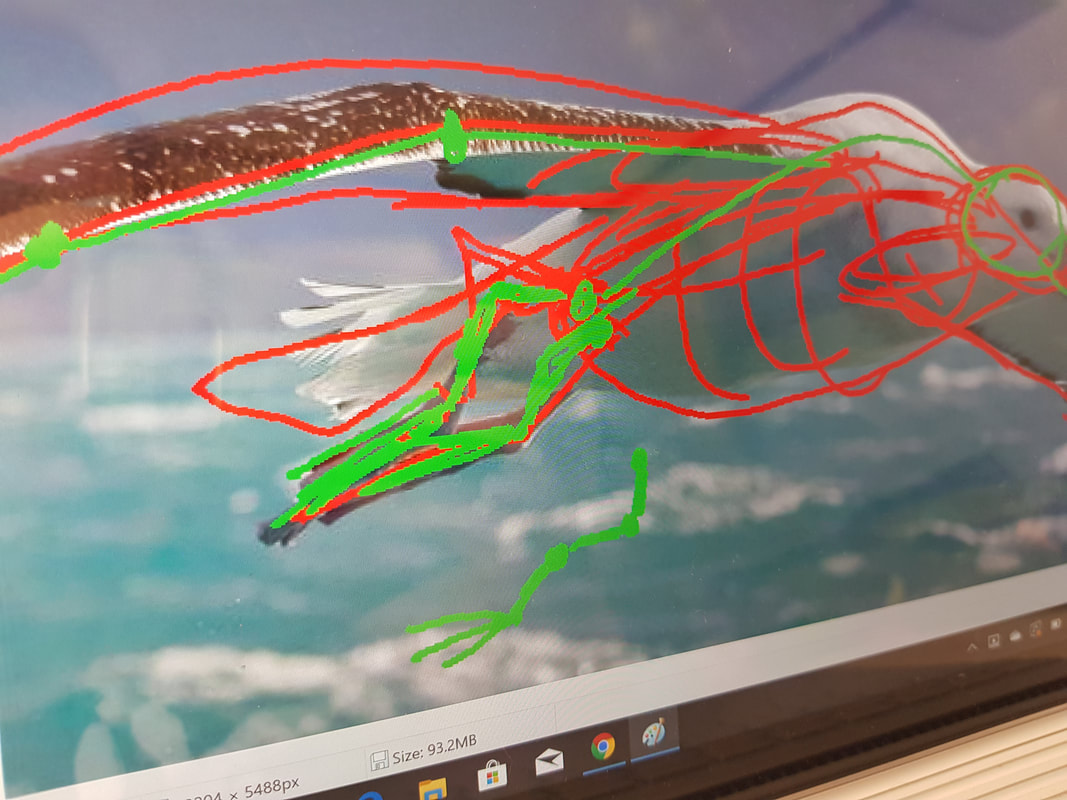
How do the feet fold while in flight?
|
Drawing the details
I sketched out some shapes that I liked, then filled in the details with reference to photos.
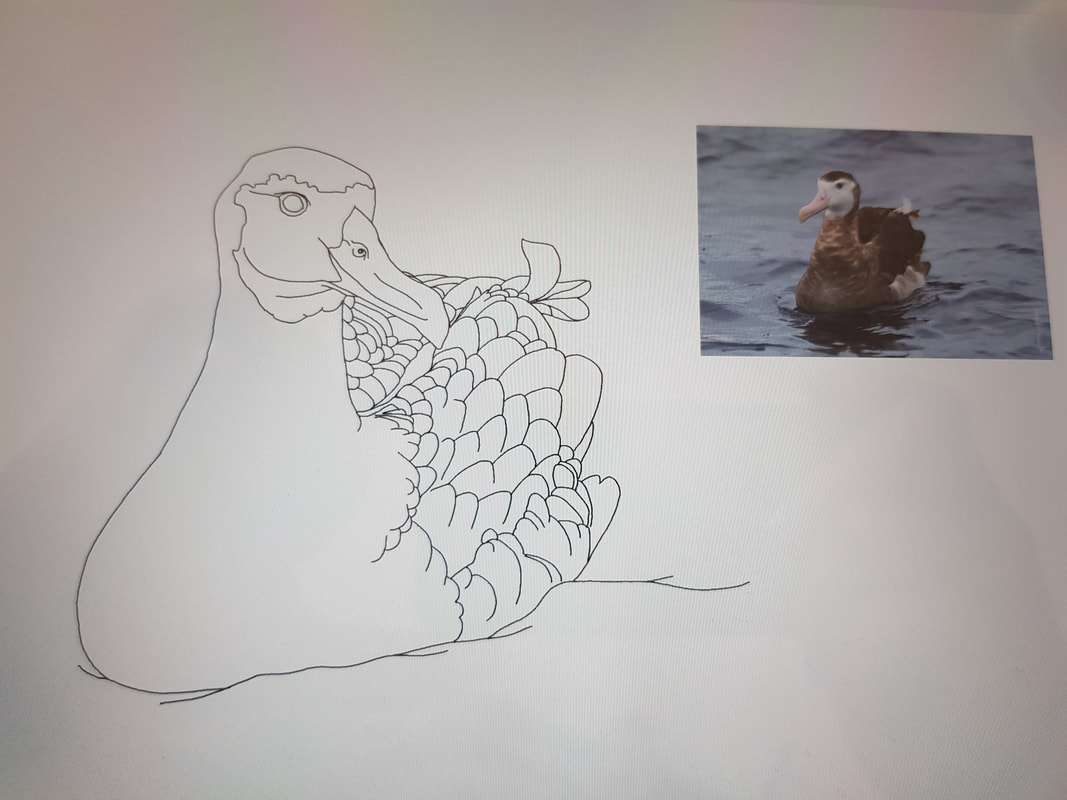
How does the colouration work around the head?
|
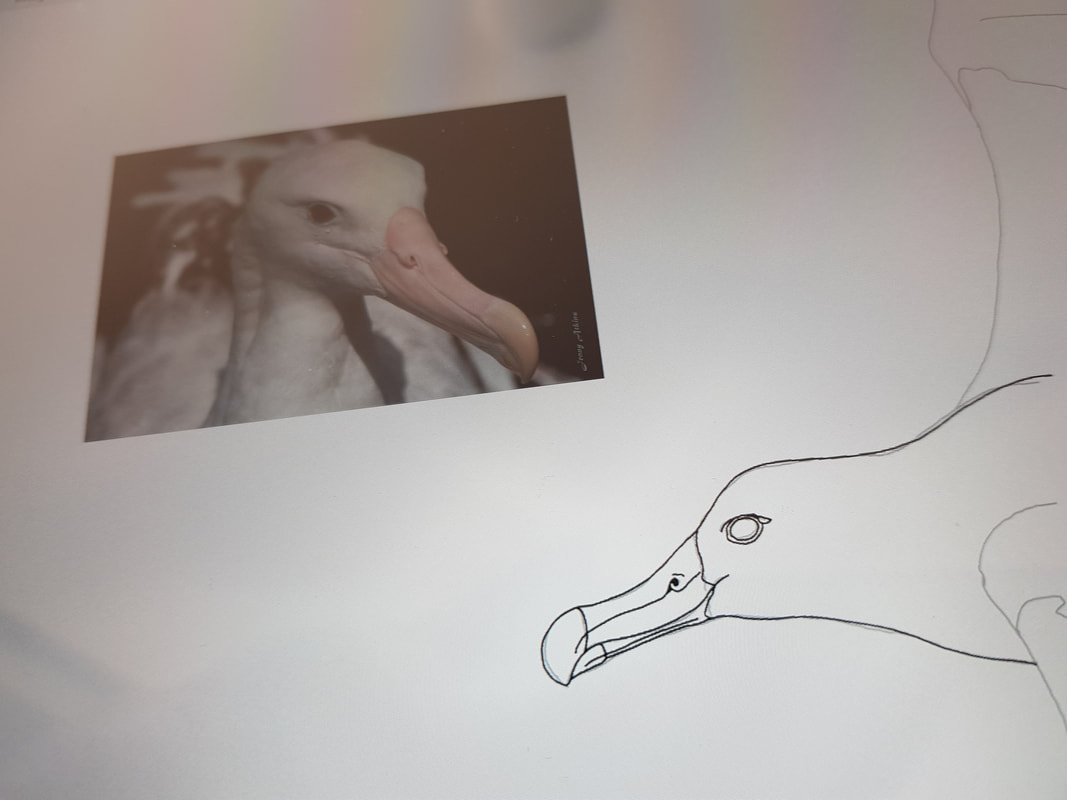
These beaks are DIFFICULT
|
A standardised colour scheme
I decided to standardise the colouration in a form of greyscale, so that I can do final colours at the end of the process, so all the feathers will be in tones of the two standard grey shades in MS Paint. The beaks are coloured in shades of standard colours, too.
I am calling this one done – for now.


